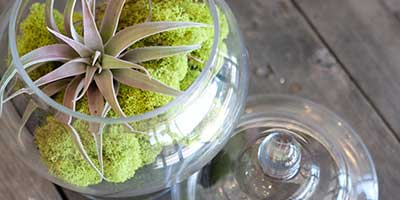Time to dust off your thinking cap, because we here at KaBloom are heading back to school to learn about the anatomy of flowers! We work with them everyday, and we’re sure you see flowers in some way everyday, but we usually only think of them as a singular unit. Well, grab a magnifying glass and look closely at a flower, because there’s more to it than meets the eye!
For starters, every flower is made up of six parts. Beginning at the bottom, the first part we see is the peduncle, which is just a fancy word for the stem. The peduncle can have smaller pedicels that let multiple flowers grow on one stem! Next, you come to a bulging part near the top of the flower. That’s the receptacle, which holds all parts of the flower together. Right above that, you’ll see what look like little green leaves. Those are the sepals, which protect the flower before it blooms. The most obvious part of the flower, the petals, comes next. They’re the leaf-like part that gives the flower its shape. They vary in shape and size, and often have vibrant colors to attract insects and small creatures. This is important for fertilization, which we’ll talk about next.
Now, flowers can have a stamen, the male reproductive organ, or the pistil, the female reproductive organ. The stamen is made up of two parts, the anther, which is responsible for producing pollen, and the filament, which holds the anther. The pistil is a little more complex with four parts. The topmost part is the stigma, which receives the pollen to begin the process. After having the pollen, it travels down a pollen tube in the style, which supports the stigma and acts as a buffer to make sure the pollen doesn’t become contaminated as it moves. After it travels downwards, it reaches the flower’s ovary. That’s where the ovules are made, and when mixed with pollen, they grow into a seed.
These are just the basic parts of a flower, but there are a few other things to know about flowers and pollination. The stamens vary in size because plants that spread pollen by wind need stamens long enough to reach outside of the flower. If another agent, like an insect, helps the pollination, it will land on the petals to collect the pollen, then brings it to the partner flower for fertilization. Sometimes, flowers have both stamens and pistils, which means it can self-pollinate. Other times, it only has one set and needs help pollinating the other. And, in certain cases, flowers can pollinate with different kinds of flowers! This is called cross-pollination, and causes interesting flower variations!
It’s crazy to think about how many different parts make up a single flower! It almost makes sense, though, when you think of the intricate beauty that a flower brings with it. Now, we promise that there’s no quiz after the lesson, but hopefully you’ll be able to look at different flowers and be able to identify the different parts now. Would it be too risky to wonder if we should try cross-pollination to create some new visuals for our arrangements? Check back soon for more updates!














